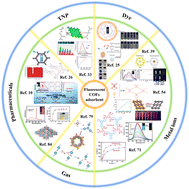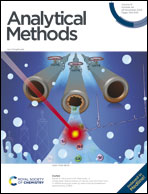Fluorescent covalent organic frameworks for environmental pollutant detection sensors and enrichment sorbents: a mini-review
Abstract
Covalent organic frameworks (COFs) are a class of porous crystalline materials based on organic building blocks containing light elements, such as C, H, O, N, and B, interconnected by covalent bonds. Because of their regular crystal structure, high porosity, stable mechanical structure, satisfactory specific surface area, easy functionalization, and high tunability, they have important applications in several fields. Currently, most of the established methods based on COFs can only be used for individual detection or adsorption of the target. Impressively, fluorescent COFs as a special member of the COF family are able to achieve highly selective and sensitive detection of target pollutants by fluorescence enhancement or quenching. The construction of a dual-functional platform for detection and adsorption based on fluorescent COFs can enable the simultaneous realization of visual monitoring and adsorption of target pollutants. Therefore, this paper reviews the research progress of fluorescent COFs as fluorescence sensors and adsorbents. First, the fluorescent COFs were classified according to the different bonding modes between the building blocks, and then the applications of fluorescent COF-based detection and adsorption bifunctional materials for various environmental contaminants were highlighted. Finally, the challenges and future application prospects of fluorescent COFs are discussed.

- This article is part of the themed collection: Analytical Methods Review Articles 2023


 Please wait while we load your content...
Please wait while we load your content...